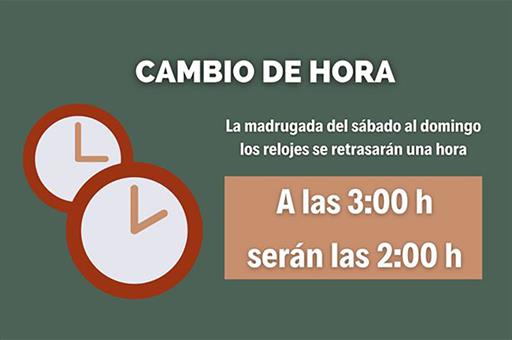This complies with European Directive 2000/84/EC, which applies to all Member States of the European Union.
The first regulations on daylight saving time were adopted in Europe in 1980, and since 2000, under this Directive, the rules were established setting March and October as the respective start and end dates.
Given the debate provoked by the application of daylight saving time from a large number of social groups, the European Commission held a public consultation in 2018, in which more than 80% of the 4.6 million citizens who participated were in favour of ending the hour change.
Based on this result, the Commission recommended ending this practice, proposing March 2019 as the final hour change. The lack of agreement between Member States and the impact evaluations led to Europe delaying the possible cancellation of the hour change until 2021, given the possibility of certain countries opting to maintain daylight saving time and others preferring the alternative.
If a decision is finally taken to permanently adopt daylight saving time, the final hour change will take please in March 2021; alternatively, the clocks will be turned back for the last time in October 2021 in those countries that decide to remain on winter saving time.
Spain has not yet decided which hour to opt for. The information the Spanish Administration will use to make this decision is supported, among others, by the survey carried out by the Sociological Research Centre (Spanish acronym: CIS) in November 2018, in which 65% of those surveyed expressed a preference for daylight saving time, and a report requested from a committee of experts specifically set up by the government to discuss this issue in September 2018.
Local Time Zone
Spain is geographically located in the local time zone UTC/GMT+1, like most of Europe, except for the United Kingdom, Ireland and Portugal, which remain in UTC/GMT+0. Spanish "official time" signed up to this local time zone back in 1940, which is 60 minutes ahead of "universal time".
At Spain's latitude, the number of sunlight hours is almost consistent throughout the country, +- 10 in winter and +-14 in summer, although sunrise and sunset do not occur at the same time in the east and west, with more than one hour's difference possible between the two extremes. By way of example, Vigo is the European city with the latest sunset.
Energy saving
In 2018, the European Parliament's Industry, Research and Energy Committee published a report which highlighted that, although seasonal hour changes can lead to savings, they are not significant, and it is not certain that these benefit all Member States.
The report also reveals that, although there may be energy savings for lighting, it is not certain that this is the case for heating, which may even result in increased consumption. Furthermore, the results are difficult to interpret as they are strongly influenced by external factors such as weather conditions and user behaviour.
In Spain, there are no up-to-date reports that confirm that the time change leads to energy savings. Furthermore, with the new demands for energy efficiency for lighting, air conditioning and buildings, together with the gradual introduction of self-consumption, the analyses previously used to calculate these data alter significantly.
Non official translation





